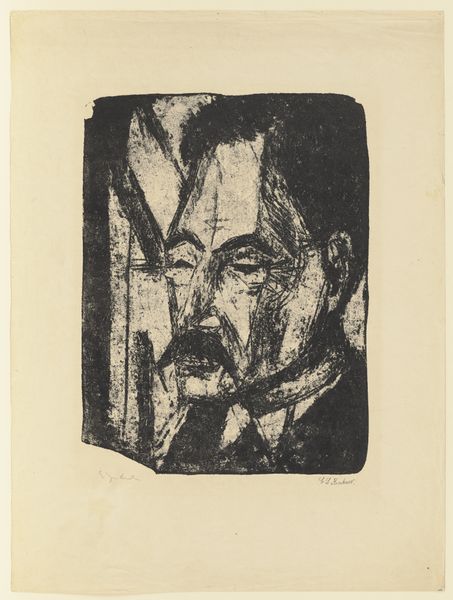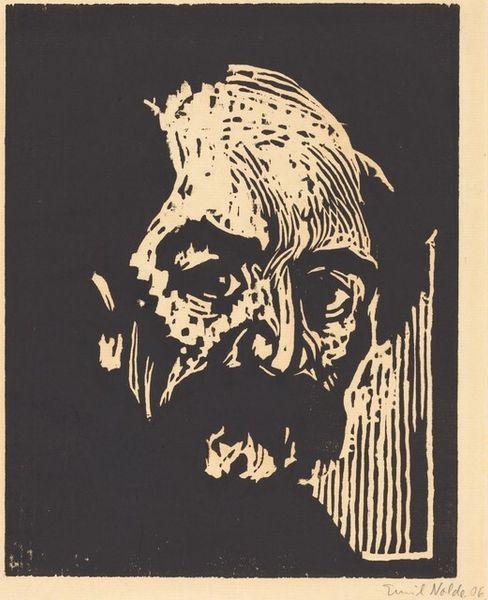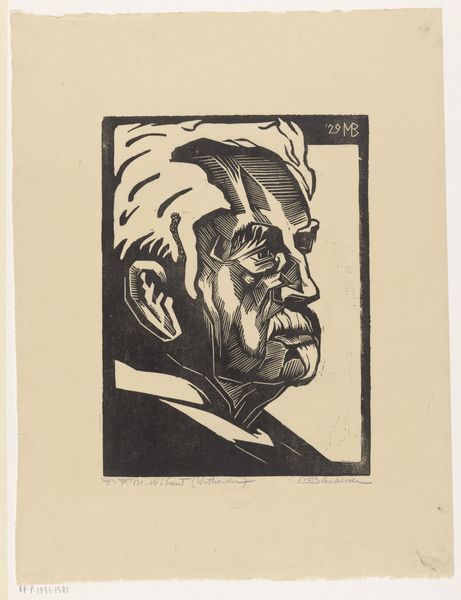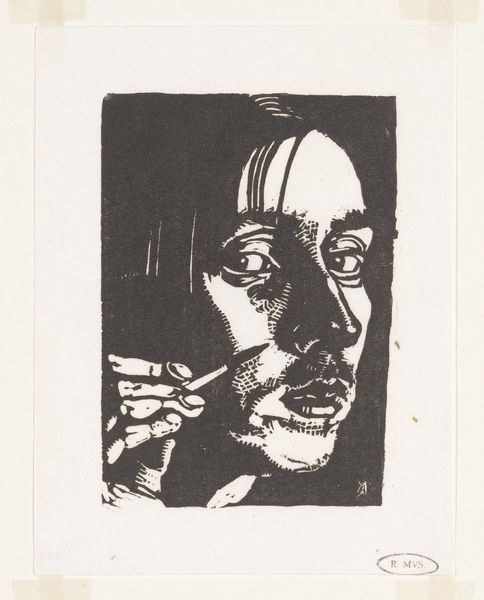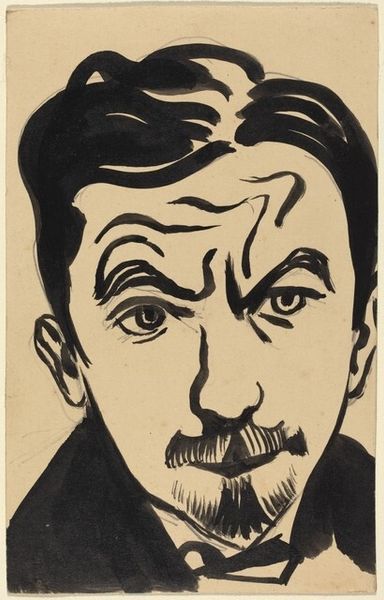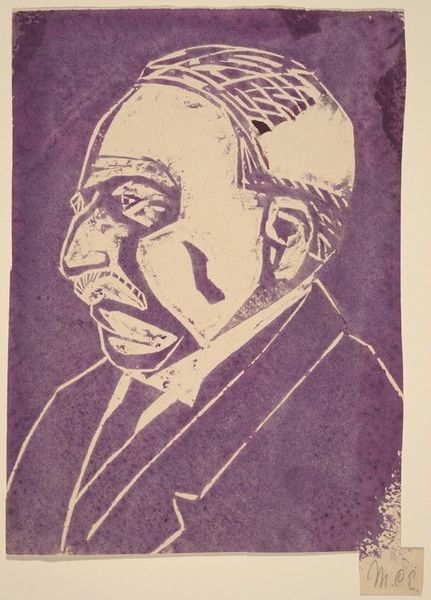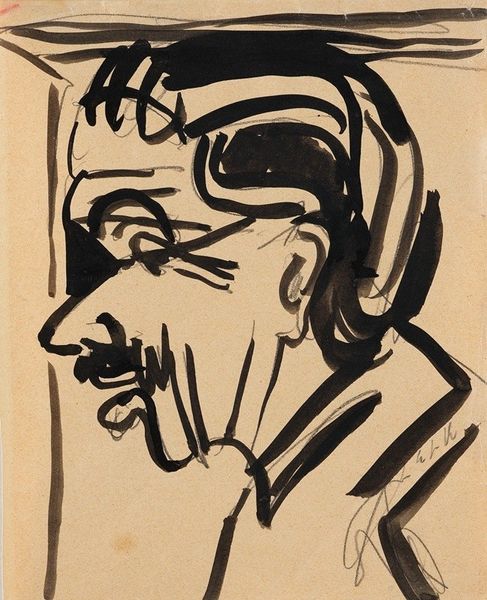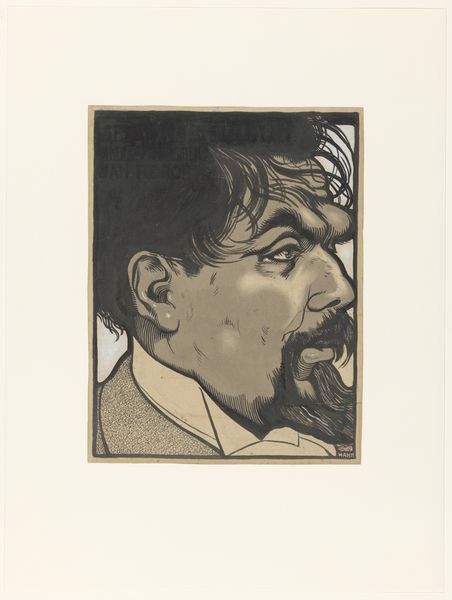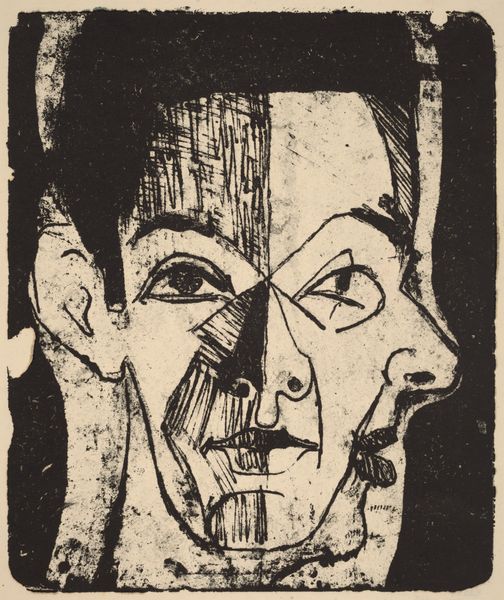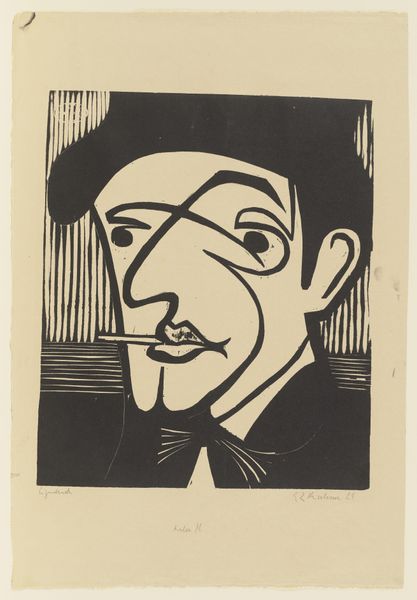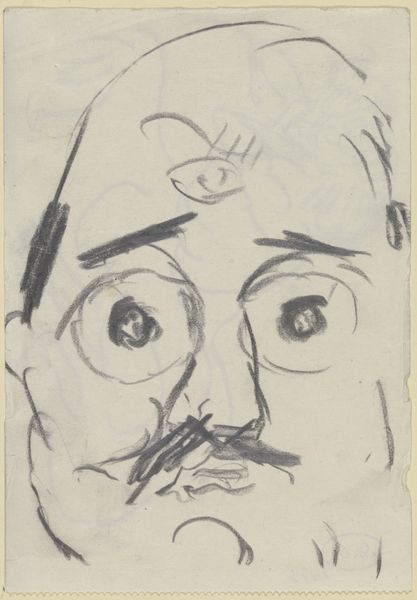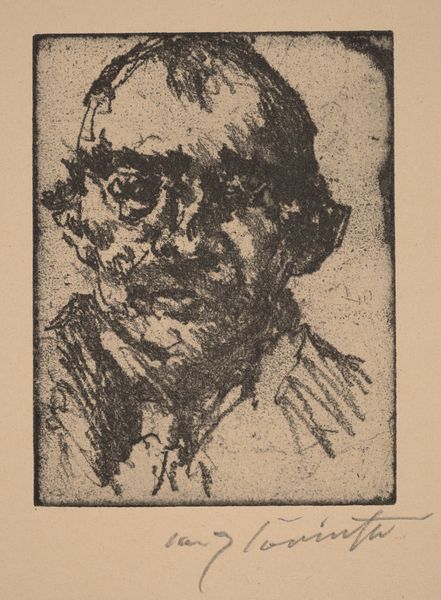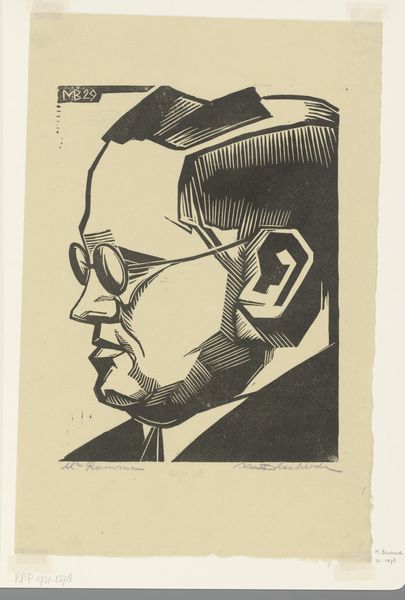
print, woodcut
#
portrait
#
figurative
#
self-portrait
# print
#
caricature
#
caricature
#
german-expressionism
#
figuration
#
expressionism
#
woodcut
#
line
#
portrait drawing
Copyright: Public Domain: Artvee
Editor: This is Ernst Ludwig Kirchner’s "Self-Portrait with Female Profile," created in 1926. It’s a woodcut print, and I find the stark lines and contrasting colors really striking. The way he presents himself seems almost…unsettling. What do you see in this piece? Curator: The unease you feel is understandable. Kirchner was a key figure in German Expressionism, a movement deeply concerned with the alienation of the individual in modern society. Consider the historical context: Germany in the 1920s was a fractured nation grappling with the aftermath of World War I. Editor: How does that context affect the self-portrait itself? Curator: The woodcut medium itself is significant – its roughness mirrors the emotional turmoil of the era. Kirchner is presenting himself alongside a blurred, ghostlike female figure. It speaks to the changing role of women. What do you think this female profile represents? Is it idealized or threatening? Editor: I see what you mean about the ghostlike figure, a distorted ideal that's just out of reach. So the image isn't just about *him*, but his place in a society with shifting gender dynamics? Curator: Precisely. It's a deeply personal work that resonates with the sociopolitical anxieties of its time. Kirchner battled with mental health, worsened by his war experiences and societal instability, leading to his suicide in 1938. Can we view the double image as psychological fragmentation? Editor: I had not considered the social dimension of the artist's self-representation so thoroughly. Thinking about both Kirchner’s personal struggle and also the impact of German society really shifts the meaning. Curator: And perhaps understanding the artwork in a complex social context illuminates its power as both historical document and social critique.
Comments
No comments
Be the first to comment and join the conversation on the ultimate creative platform.
